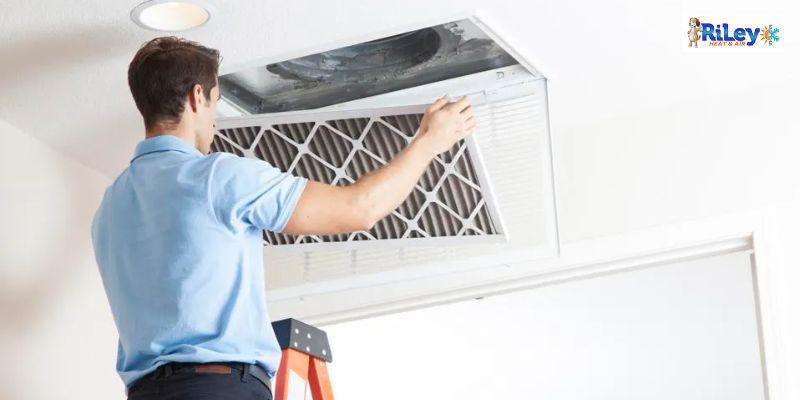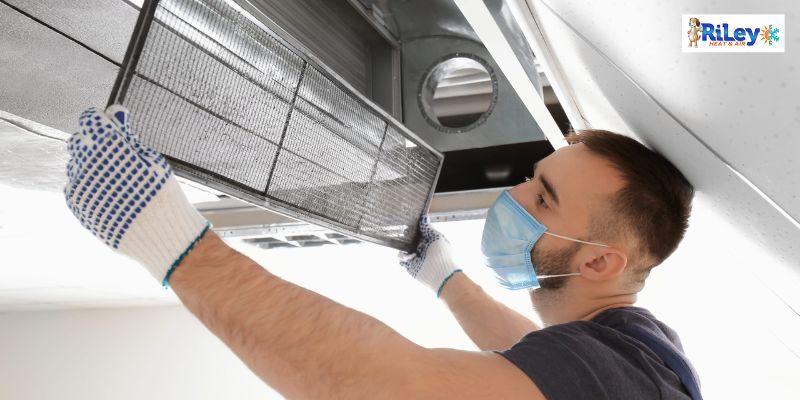
The Ultimate Guide to AC Duct Cleaning: Procedures and Best Practices
Maintaining a clean and efficient air conditioning (AC) system ensures optimal indoor air quality and maximizes energy efficiency. Regular AC duct cleaning plays a crucial role in achieving these goals.
This guide will explore the procedures and best practices involved in HVAC duct cleaning, providing a comprehensive understanding of keeping your AC system in top shape. From the importance of duct cleaning to the step-by-step process, we've got you covered. Opting for the best air duct cleaning services is essential to maintain your unit regularly.
The Importance of AC Duct Cleaning

AC duct cleaning is highly essential for several reasons:
1. Improved Indoor Air Quality

Over time, dust, dirt, pollen, pet dander, and other contaminants accumulate within the AC ducts. When the AC system operates, these pollutants can be circulated throughout your home or office, leading to poor indoor air quality.
Regular duct cleaning removes these contaminants, promoting clean and healthy air circulation. This is particularly beneficial for individuals with allergies, asthma, or respiratory sensitivities, as it helps reduce the triggers for these conditions and improves overall respiratory health.
2. Removal of Bad Smell
Mold, mildew, bacteria, and pests can enter AC ducts, leading to unpleasant odors. Cleaning the ducts eliminates these odor sources, resulting in a fresher and more pleasant indoor air.
3. Energy Efficiency
When the ducts are clogged with debris, the airflow within the AC system becomes restricted. This causes the system to work harder to maintain the desired temperature, increasing energy consumption. Cleaning the ducts ensures smooth and unrestricted airflow, reducing strain on the design and enhancing its energy efficiency. This, in turn, leads to lower energy bills and a more sustainable approach to cooling your space.
4. Extended Equipment Lifespan
A clean and well-maintained AC system is less prone to breakdowns and malfunctions. When the ducts are clean, the system can operate more efficiently, reducing wear and tear on its components. This helps extend the lifespan of the equipment, saving you from premature replacements and costly repairs.
5. Improved Airflow
Accumulated dirt, debris, and other obstructions within the ducts can hinder proper airflow. Restricted airflow not only affects the cooling or heating efficiency of the system but also creates inconsistencies in temperature distribution throughout your space. Regular duct cleaning ensures unrestricted airflow, leading to more even and comfortable temperatures in every room.
6. Mold Growth Prevention
AC ducts provide an ideal environment for mold growth, particularly in humid climates or areas where moisture infiltration is present. Mold spores can be circulated through the ductwork, potentially causing respiratory issues and allergic reactions. Regular duct cleaning helps prevent mold growth by removing the accumulated moisture and reducing the presence of organic matter that supports mold growth.
AC Duct Cleaning Procedures
Step 1: Preparation
Before starting the duct cleaning process, it is crucial to take specific preparatory steps:
- Notify Occupants: Inform the occupants of the building about the upcoming duct cleaning process. This will allow them to prepare accordingly by moving furniture away from the vents.
- Turn Off the System: Turn off the AC system to avoid circulating dust and debris during cleaning.
Step 2: Visual Inspection
Perform a visual inspection of the ductwork to identify any visible signs of contamination, damage, or leaks. This step helps determine the cleaning required and identifies potential problem areas that need attention.
Step 3: Protecting the Surrounding Area
To prevent dust and debris from spreading to other areas of the building during the cleaning process, take the following precautions:
- Seal Supply and Return Registers: Cover the supply and return registers with protective plastic sheets or technical register covers to prevent dislodged contaminants from entering the living or working spaces.
- Lay Down Drop Cloths: Place drops of cloths or protective coverings around the work area to collect any debris or dust that may fall during cleaning.
Step 4: Cleaning Tools and Techniques
Various tools and techniques are used to clean the AC ducts effectively, including:
- Agitation Devices: These devices, such as brushes or air whips, dislodge and remove stubborn dust and debris from the duct walls. Care must be taken to use appropriate brushes that won't damage the ductwork.
- High-Pressure Air Whip Systems: These systems use compressed air to blow out contaminants, dislodging them from the duct surfaces. They are particularly effective for removing loose debris.
- Negative Air Machines: Negative air machines create negative pressure within the ducts, pulling the dislodged contaminants towards the vacuum system, ensuring they are effectively captured and removed.
Step 5: Systematic Duct Cleaning
Now let's delve into the actual duct cleaning process:
- Access Points: Access points are created in the ductwork at strategic locations to insert cleaning equipment. This can be done by removing existing grilles or by making small openings.
- Ductwork Cleaning: Starting from the farthest point, the cleaning equipment is carefully inserted into the ductwork and moved systematically toward the air handler unit. The brushes, air whips, or high-pressure air systems dislodge and remove the accumulated debris.
- Vacuum Collection: As the cleaning process proceeds, a powerful vacuum system connected to the ductwork captures the dislodged contaminants, ensuring they are effectively removed.
- Sanitization: After the cleaning process, it is recommended to apply a sanitizing agent to the ducts to eliminate any remaining microbes or odors. This step helps improve indoor air quality further.
Step 6: Final Inspection and Reinstallation
Once the duct cleaning is completed, conduct a final inspection to ensure all the contaminants have been effectively removed. The access points, grilles, and register covers were removed during cleaning.
Final Thoughts
AC duct cleaning is vital to maintaining a healthy and energy-efficient indoor environment. By following the procedures and best practices outlined in this guide, you can ensure that your AC system remains clean, efficient, and capable of providing fresh and breathable air. Regular maintenance and professional cleaning will improve indoor air quality and extend your AC system's lifespan, leading to greater comfort and savings in the long run.
COMMENTS
LEAVE A COMMENT







This ultimate guide to AC duct cleaning is a fantastic resource for homeowners. It covers procedures and best practices for ensuring our indoor air stays clean and healthy. Thanks for sharing this comprehensive information!